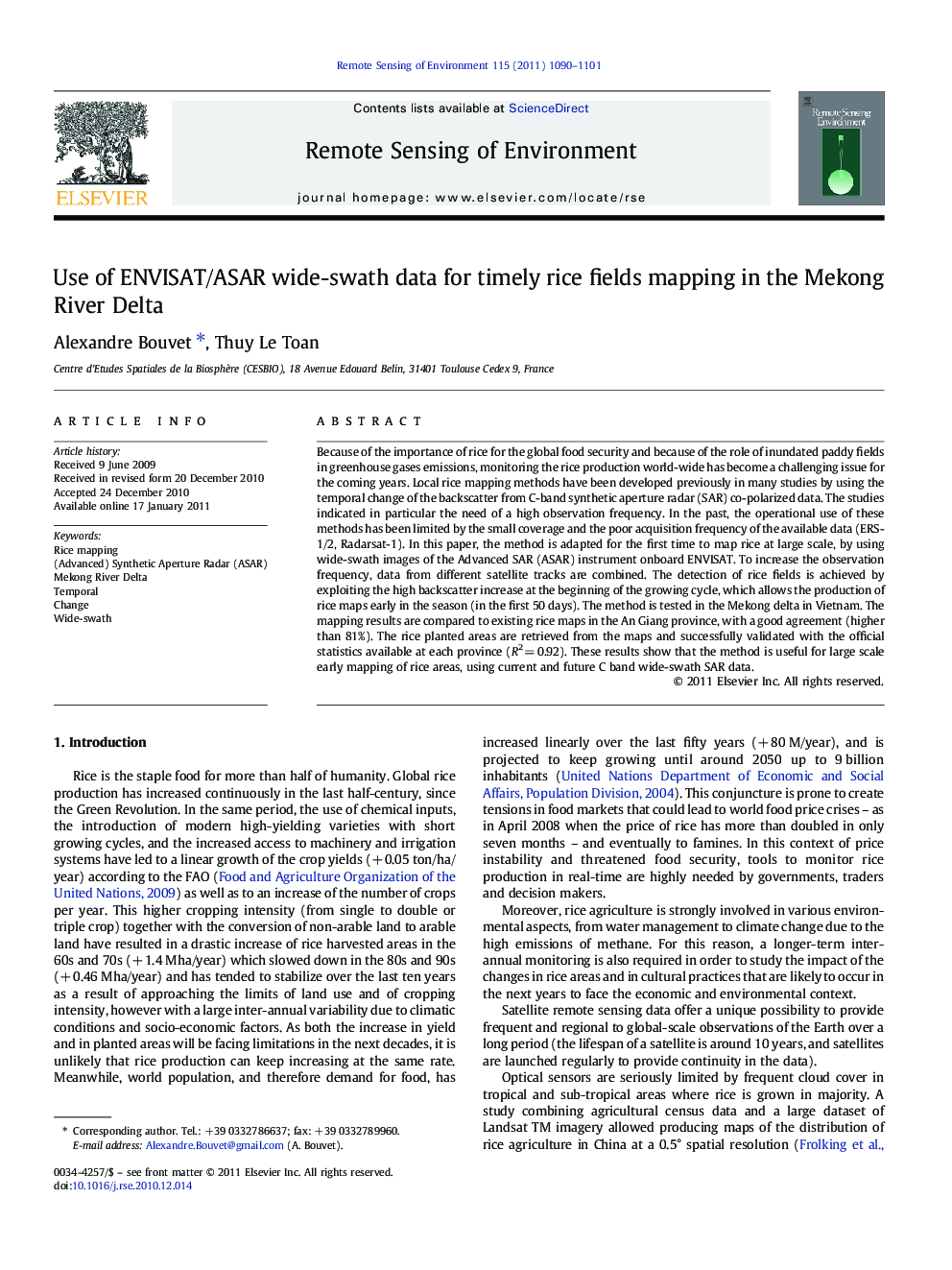| کد مقاله | کد نشریه | سال انتشار | مقاله انگلیسی | نسخه تمام متن |
|---|---|---|---|---|
| 4459568 | 1621293 | 2011 | 12 صفحه PDF | دانلود رایگان |

Because of the importance of rice for the global food security and because of the role of inundated paddy fields in greenhouse gases emissions, monitoring the rice production world-wide has become a challenging issue for the coming years. Local rice mapping methods have been developed previously in many studies by using the temporal change of the backscatter from C-band synthetic aperture radar (SAR) co-polarized data. The studies indicated in particular the need of a high observation frequency. In the past, the operational use of these methods has been limited by the small coverage and the poor acquisition frequency of the available data (ERS-1/2, Radarsat-1). In this paper, the method is adapted for the first time to map rice at large scale, by using wide-swath images of the Advanced SAR (ASAR) instrument onboard ENVISAT. To increase the observation frequency, data from different satellite tracks are combined. The detection of rice fields is achieved by exploiting the high backscatter increase at the beginning of the growing cycle, which allows the production of rice maps early in the season (in the first 50 days). The method is tested in the Mekong delta in Vietnam. The mapping results are compared to existing rice maps in the An Giang province, with a good agreement (higher than 81%). The rice planted areas are retrieved from the maps and successfully validated with the official statistics available at each province (R2 = 0.92). These results show that the method is useful for large scale early mapping of rice areas, using current and future C band wide-swath SAR data.
Research Highlights
► We develop a large-scale rice fields mapping method using wide-swath SAR data.
► Multi-track datasets are used to increase the observation frequency.
► The temporal change of backscatter in each track is an effective classifier.
► Precise planted area estimations are hampered by the coarse resolution.
► Operational application is possible in integrated systems using ancillary data.
Journal: Remote Sensing of Environment - Volume 115, Issue 4, 15 April 2011, Pages 1090–1101